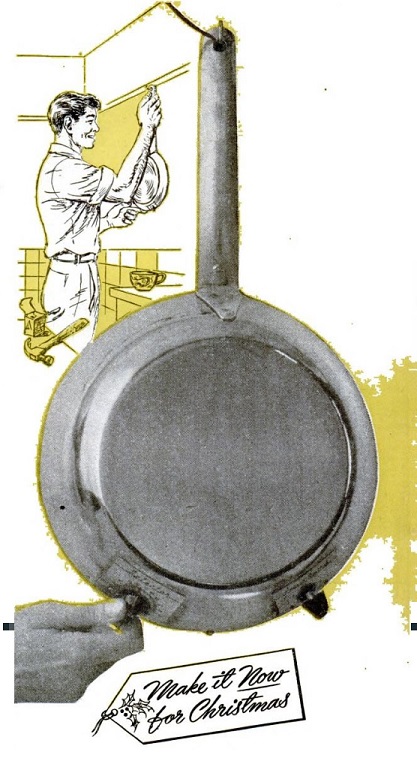 The gentleman shown here didn’t bother battling Black Friday crowds to get the perfect gift for his wife. He went down to the workshop and made something not available in any store–a radio concealed in a skillet. As the article in the November 1949 issue of Popular Science points out, the kitchen was the wife’s workshop, and the radio brightened up hanging among the other pots and pans as a decorative addition. As the article notes, it would allow her to listen to music, news, and soap operas, “and sometimes remind her that it’s later than she thinks.”
The gentleman shown here didn’t bother battling Black Friday crowds to get the perfect gift for his wife. He went down to the workshop and made something not available in any store–a radio concealed in a skillet. As the article in the November 1949 issue of Popular Science points out, the kitchen was the wife’s workshop, and the radio brightened up hanging among the other pots and pans as a decorative addition. As the article notes, it would allow her to listen to music, news, and soap operas, “and sometimes remind her that it’s later than she thinks.”
Before constructing the set, the builder had to give some thought to where it would be hung. The circuit shown in the magazine included a loop antenna, but the magazine cautioned that if it were hung on a metal cabinet, the shielding would mean that the loop wouldn’t work very well. In that case, an antenna coil and external antenna could be used.
The set was an “All American Five” five-tube superhet, and the magazine cautioned that one had to be careful making it so that it wouldn’t prove a shock hazard around the water pipes in the kitchen. Since one side of the line cord could be “hot,” there could be no direct connection from the set’s ground to the pan. Any necessary connections needed to be through a capacitor or high-value resistor.
The example shown here was for a ten inch skillet. The first step was to plot out the position of components in the skillet that was used. Virtually any skillet of any material, old or new, could be used.
In fact, the editors add the following P.S. at the end of the article: “P.S. How about giving your wife a new pan and using her old one for this project?”
I bet his wife was overjoyed.
